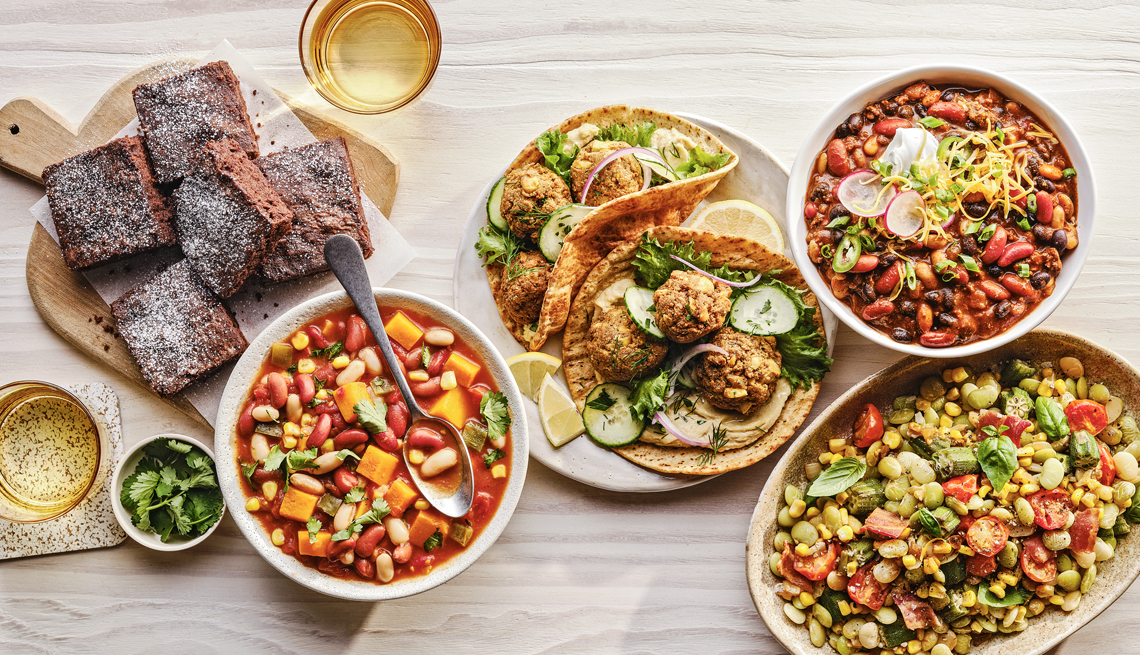Play all audios:
Yes, all beans are healthy, with protein and fiber. But bean flavors, textures and uses range far more widely than many casual cooks might imagine. We asked chef Charlie Layton of Basic
Kitchen in Charleston, South Carolina, for eight of his favorite dry bean choices. Plus, we’ve added a few other varieties and tips to consider. Before you get started working with dry
beans, know that most varieties should be soaked for at least four hours in a ratio of 1 part beans to 4 parts water, then drained. In some cases, adding baking soda during soaking shortens
cooking time and yields creamier results. If you want to use canned beans, try to find “no salt added” versions. Standard canned beans often have high levels of sodium, and rinsing them
removes only some of it. And just know, their texture will be softer than if they’re freshly cooked. Here are some varieties of beans to try. TYPE: ADZUKI JOHNNY AUTRY NATIVE TO: Asia
FLAVOR: Sweet and nutty BEST USES: Salads; sweet applications such as plant-based brownies COOKING TIP: No soaking required TYPE: GREAT NORTHERN JOHNNY AUTRY NATIVE TO: The Americas FLAVOR:
Mild and slightly nutty BEST USES: Classic baked beans; add to soups or stews COOKING TIP: To skip the soak, use a multicooker. ALSO CONSIDER: Other popular white beans include navy and the
slightly larger and meatier cannellini (sometimes called white kidney beans). TYPE: FAVA/BROAD JOHNNY AUTRY NATIVE TO: Mediterranean and Middle East FLAVOR: Creamy, earthy and slightly sweet
BEST USES: Egyptian-style falafel; hummus; salads COOKING TIP: Add baking soda to soaking water to loosen skins. Remove skins from water after cooking. TYPE: BLACK NATIVE TO: The Americas
FLAVOR: Earthy and almost mushroomlike BEST USES: Served with rice; soups; veggie burgers COOKING TIP: Simmer with onion and garlic, or use a pressure cooker to eliminate soaking. TYPE:
KIDNEY NATIVE TO: The Americas FLAVOR: Slightly sweeter than white but very tender BEST USES: Caribbean-style rice and peas; chili COOKING TIP: Season after cooking. ALSO CONSIDER: Red
beans, popular in Creole and Central American cuisines, are generally smaller but somewhat similar to red kidneys. TYPE: LIMA/BUTTER BEAN JOHNNY AUTRY NATIVE TO: The Americas FLAVOR: Sweet
and mild BEST USES: Sott’olio (preserved in seasoned olive oil); salads; succotash; veggie burgers COOKING TIP: No soaking required; add beans to salted boiling water, then simmer over
medium-low heat for 25 minutes. ALSO CONSIDER: Like oversize beans? Consider the gigante, popular in Greek cuisine. TYPE: PINTO NATIVE TO: The Americas FLAVOR: Creamy, slightly nutty and
smooth in texture BEST USES: Chili; various beans and rice dishes COOKING TIP: Skim any scum off cooking water; can also be cooked directly in a sauce. ALSO CONSIDER: Other popular
multicolor beans include black-eyed peas (which, yes, are beans, not peas), Anasazi and cranberry. TYPE: CHICKPEA/GARBANZO NATIVE TO: Mediterranean and Middle East FLAVOR: Buttery, smooth
and creamy BEST USES: Falafel; hummus; marinated; reserve can liquid/cooking water for plant-based egg alternative COOKING TIP: To make hummus/puree, soak for 12 hours using baking soda.
Boil without salt.

